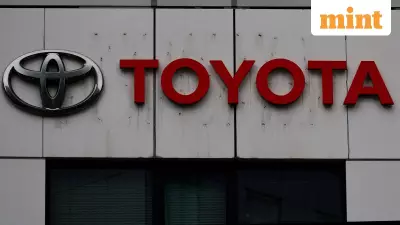
Tata Steel stands at a critical juncture as it prepares to announce its July-September quarter results on November 12. The company faces simultaneous challenges in restoring profitability in its European operations while pushing forward with ambitious expansion plans in India.
European Operations Under Microscope
All eyes remain fixed on Tata Steel's European business, particularly the UK and Netherlands operations. The company recently secured up to €2 billion in financing from the Dutch government for its IJmuiden-based steel plant, marking a significant step in its European decarbonization strategy. However, political uncertainty in the Netherlands and slow coalition-building could delay final approvals, testing investor patience.
According to Aditya Welekar, senior research analyst at Axis Securities, "The key focus in Europe will be on profitability across the UK and the Netherlands and understanding the challenges there, the path toward decarbonization, and the role of government support."
Analysts expect the European segment to show improved performance, with Axis Securities projecting EBITDA per tonne to jump to $31 from $8 in the previous quarter, driven by lower coking coal consumption.
India Expansion: Ambitious 40 MTPA Target
Tata Steel's domestic growth strategy centers around achieving 40 million tonnes per annum capacity by 2030, a goal first outlined in its FY23 annual report and reiterated by Tata Sons chairman N. Chandrasekaran last year. The company has committed approximately ₹10,000 crore annually in capital expenditure to reach this target.
The immediate focus involves two key projects: ramping up Kalinganagar to its full 8 mtpa capacity by end-2025 and scaling up NINL (Neelachal Ispat Nigam Ltd) from 1 mtpa to 5 mtpa, pending regulatory clearances. Once completed, these projects will bring total capacity to 31-32 mtpa, still short of the long-term target.
However, analysts remain cautious about the timeline, describing the roadmap as "ambitious but unclear" given the regulatory hurdles and execution challenges.
Financial Performance Expectations
Analysts at Systematix Institutional Equities project consolidated revenue to increase 7% year-on-year and 8% sequentially to ₹57,640 crore, driven by higher volumes offset by lower steel prices. EBITDA margin is expected to expand to 14.2% from 11.4% in the same period last year, supported by superior sales mix, cost control measures, and operational efficiency.
Despite these positive indicators, investors should anticipate net sales realizations to decline by 4% due to persistent pressure on steel prices throughout the quarter. Weak monsoon conditions and industry oversupply contributed to the pricing pressure, with little signs of recovery so far.
The expiration of the temporary 12% safeguard duty on steel imports adds another layer of uncertainty, with investors awaiting clarity on new staggered duties recommended by the DGTR to support domestic producers.
Management Commentary and Global Factors
Investors will closely monitor management commentary on several fronts, including the final project cost for decarbonizing the IJmuiden plant in the Netherlands and progress on detailed engineering designs. A significant concern for analysts is timing the shutdowns of British and Dutch plants to avoid simultaneous operational disruptions.
Globally, attention remains on the EU's Carbon Border Adjustment Mechanism and its potential impact on Tata Steel's competitiveness in European markets. The company's ability to navigate these regulatory challenges while maintaining growth momentum will be crucial for long-term success.
Despite pushing its UK breakeven guidance to the end of FY26 from the original second-quarter target, Tata Steel's stock has demonstrated resilience, gaining nearly 18.5% since April and outperforming most Tata Group peers.





